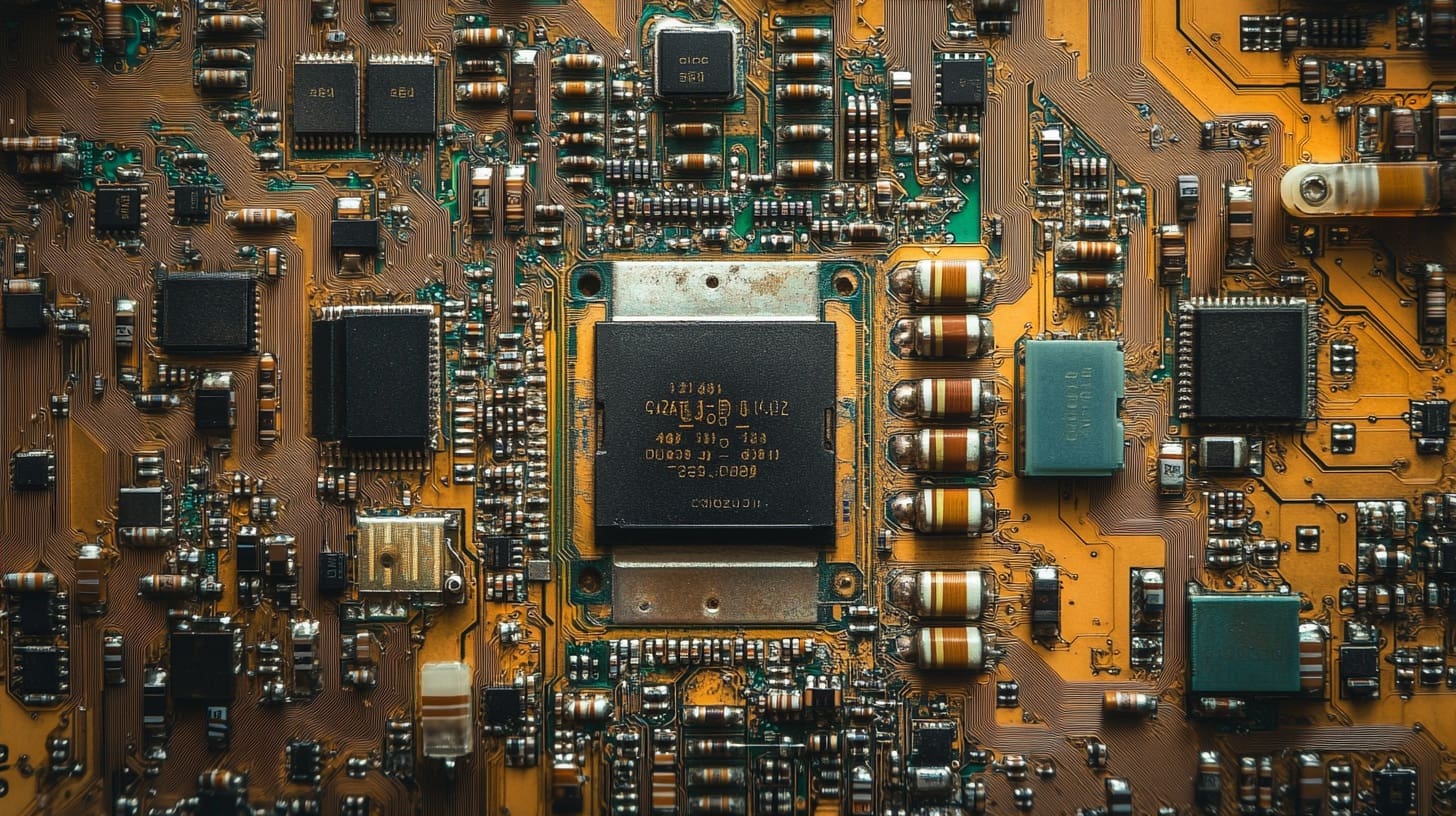Capacitors are one of the most essential components in electronics, playing a pivotal role in numerous circuits and devices. They are used for a variety of purposes, including energy storage, filtering, signal coupling, and power management. Capacitors are present in virtually all electronic devices, from small gadgets like smartphones and laptops to larger systems such as power supplies and industrial equipment. Understanding how capacitors work, the different types available, and their specific capacitance values is crucial for anyone involved in electronics design, repair, or hobbyist projects.
At their core, capacitors are passive electronic components that store and release electrical energy. They consist of two conductive plates separated by an insulating material called a dielectric. When voltage is applied, an electric field forms across the dielectric, allowing the capacitor to store energy. This ability to store charge makes capacitors vital for managing energy flow in circuits, smoothing out voltage fluctuations, and even serving as temporary power sources during brief outages.
The performance of a capacitor is determined primarily by its capacitance value, measured in farads (F), which indicates how much charge it can store. However, capacitance values vary widely, from tiny picofarads (pF) in signal processing circuits to farads (F) in energy storage applications. The choice of capacitance value, as well as the type of capacitor, significantly influences the behavior and efficiency of electronic circuits.
What is Capacitance?
Capacitance is a measure of a capacitor’s ability to store an electric charge, defined by the ratio of the charge stored on each plate to the voltage across the plates. Mathematically, capacitance (C) is given by the formula:
C = Q / V
where:
- C is the capacitance in farads (F),
- Q is the charge in coulombs (C), and
- V is the voltage across the capacitor in volts (V).
The capacitance of a capacitor depends on several factors, including the surface area of the plates, the distance between the plates, and the properties of the dielectric material. Larger plates and closer spacing increase capacitance, while the type of dielectric material can also significantly affect the amount of charge stored.
Types of Capacitors
Capacitors come in a variety of types, each with unique characteristics suited to specific applications. The most common types of capacitors include:
- Ceramic Capacitors: Ceramic capacitors are widely used in electronics due to their small size, low cost, and wide range of capacitance values. They are made from ceramic materials that act as the dielectric and are often used in high-frequency applications like RF circuits and power supplies. Ceramic capacitors are available in multiple classes, such as Class I (stable, low-loss) and Class II (higher capacitance but less stable), making them versatile for different use cases.
- Electrolytic Capacitors: Electrolytic capacitors are known for their high capacitance values, typically ranging from microfarads (µF) to several thousand microfarads. These capacitors use an electrolyte as the dielectric and are polarized, meaning they must be connected in the correct direction in a circuit. Electrolytic capacitors are commonly used in power supply filtering, audio amplifiers, and energy storage applications. However, they are prone to leakage and have limited lifespan compared to other types.
- Tantalum Capacitors: Tantalum capacitors are similar to electrolytic capacitors but use tantalum as the dielectric, offering greater stability, reliability, and higher capacitance per unit volume. These capacitors are used in space-constrained applications where high capacitance is needed, such as in portable electronics and digital devices. Despite their benefits, tantalum capacitors can be sensitive to surge currents and must be used with care in high-stress environments.
- Film Capacitors: Film capacitors use thin plastic films as the dielectric and are known for their excellent stability, low loss, and high insulation resistance. They are non-polarized and are available in a wide range of capacitance values. Film capacitors are used in applications requiring high precision and reliability, such as audio equipment, signal processing, and AC power applications.
- Supercapacitors: Supercapacitors, also known as ultracapacitors, are a type of capacitor with extremely high capacitance values, often in the range of farads. They are used for energy storage, backup power, and regenerative braking systems in electric vehicles. Unlike batteries, supercapacitors can charge and discharge rapidly, making them ideal for applications that require quick bursts of energy.
- Variable Capacitors: Variable capacitors allow the capacitance to be adjusted manually or electronically, making them useful in tuning circuits, such as in radio frequency (RF) tuning and antenna matching. These capacitors are commonly found in older radios and certain types of communication equipment.
How Capacitors Work in Circuits
Capacitors are used in various ways within electronic circuits, depending on their type and capacitance value. Their primary function is to store and release energy, but they also play other critical roles:
- Energy Storage: Capacitors can temporarily store energy and release it when needed, functioning as a short-term power source. This capability is especially useful in devices that require bursts of power, such as camera flashes or backup power systems.
- Filtering: In power supply circuits, capacitors smooth out voltage fluctuations by filtering out noise and stabilizing the output voltage. This filtering is essential in ensuring a consistent power supply to sensitive electronic components.
- Coupling and Decoupling: Capacitors are used to couple AC signals between different stages of a circuit while blocking DC components. This function is critical in audio and signal processing circuits, where capacitors help isolate different circuit stages without affecting the overall signal integrity.
- Timing and Oscillation: Capacitors are often used in combination with resistors to create timing circuits, such as oscillators and timers. The charging and discharging cycles of a capacitor determine the timing characteristics of the circuit, which is crucial in clock generators and pulse-width modulation.
- Power Factor Correction: In AC power systems, capacitors help improve power factor by compensating for inductive loads, reducing energy loss and enhancing the efficiency of power delivery.
- Voltage Regulation: Capacitors help regulate voltage in power supply circuits by providing a reservoir of charge that can be released during periods of high demand, preventing voltage drops that could affect the performance of electronic devices.
Capacitors are invaluable components that serve multiple functions across a wide range of electronic circuits. Their ability to store, filter, couple, and regulate electrical energy makes them indispensable in the design and operation of modern electronic devices.
Detailed Overview of Capacitor Specifications and Ratings
Key Specifications of Capacitors
Understanding the specifications of capacitors is crucial for selecting the right component for a specific application. The key specifications include capacitance value, voltage rating, tolerance, equivalent series resistance (ESR), and temperature coefficient. Each of these factors plays a significant role in determining how a capacitor will perform in a circuit.
- Capacitance Value: The capacitance value, measured in farads (F), defines the amount of charge a capacitor can store at a given voltage. Capacitors are available in a broad range of capacitance values, from picofarads (pF) for high-frequency applications to farads (F) for energy storage. The choice of capacitance value depends on the intended use, such as filtering, coupling, or energy storage.
- Voltage Rating: The voltage rating, also known as the working voltage, indicates the maximum voltage a capacitor can safely withstand without breaking down. Exceeding this voltage can cause the dielectric to fail, leading to capacitor damage or circuit failure. Capacitors are commonly rated for voltages ranging from a few volts in small electronics to several kilovolts in industrial and power applications. It’s essential to select a capacitor with a voltage rating higher than the peak voltage it will encounter in the circuit to ensure safe operation.
- Tolerance: Tolerance specifies how close the actual capacitance value is to the stated value, expressed as a percentage (e.g., ±10%). High tolerance capacitors (e.g., ±20%) are used in general applications where exact capacitance isn’t critical, while low tolerance capacitors (e.g., ±1% or ±5%) are used in precision circuits, such as timing and filter circuits, where precise capacitance is essential.
- Equivalent Series Resistance (ESR): ESR is the internal resistance of a capacitor that causes energy loss when it charges and discharges. Lower ESR values are desirable, especially in high-frequency and power applications, as they minimize heat generation and improve overall efficiency. Electrolytic capacitors often have higher ESR compared to ceramic or film capacitors, making the latter more suitable for high-performance circuits.
- Temperature Coefficient: The temperature coefficient describes how the capacitance value changes with temperature, typically expressed in parts per million per degree Celsius (ppm/°C). Capacitors with low temperature coefficients are used in applications requiring stable performance across a wide temperature range, such as automotive and aerospace electronics.
- Leakage Current: Leakage current refers to the small amount of current that flows through the dielectric material when a capacitor is charged. Low leakage current is essential in applications like energy storage or signal coupling, where maintaining charge over time is important. Ceramic and film capacitors generally exhibit lower leakage currents compared to electrolytic capacitors.
Capacitor Markings and Codes
Capacitors are often marked with codes that indicate their capacitance value, voltage rating, and sometimes tolerance. Unlike resistors, which use color codes, capacitors typically use numerical codes and letters.
- Three-Digit Code: The most common marking system uses a three-digit code to denote capacitance. The first two digits represent significant figures, and the third digit is the multiplier. For example, a capacitor marked with “104” would have a capacitance of 10 × 10⁴ pF, or 100,000 pF (0.1 µF).
- Letter Codes: Some capacitors use letters to indicate tolerance (e.g., “J” for ±5% and “K” for ±10%). Voltage ratings are sometimes indicated with letters as well, especially on small capacitors where space is limited.
- Polarity Markings: Electrolytic and tantalum capacitors are polarized, meaning they must be installed with the correct orientation. These capacitors are usually marked with a stripe or a minus sign to indicate the negative terminal, while the positive terminal is often longer in leaded versions.
Understanding capacitor markings is crucial when identifying and selecting components, particularly in situations where the original manufacturer’s datasheet is unavailable.
Series and Parallel Capacitor Configurations
Capacitors can be connected in series or parallel configurations to achieve desired capacitance values and voltage ratings. Each configuration offers distinct benefits and is used for different purposes in circuit design.
Series Configuration: When capacitors are connected in series, the total capacitance decreases, and the voltage rating increases. This configuration is useful when a higher voltage rating is needed without altering the circuit’s capacitance significantly. The total capacitance Ctotal for capacitors in series is given by:

Series connections are often used in applications where capacitors need to withstand high voltages, such as in power supplies and inverter circuits.
Parallel Configuration: In a parallel configuration, capacitors add together to increase the total capacitance while the voltage rating remains the same as the individual capacitors. This setup is ideal when higher capacitance is needed without increasing the voltage handling capability. The total capacitance Ctotal in parallel is:

Parallel capacitors are commonly used in filtering and decoupling applications to smooth out power supply variations and improve overall stability.
Series-Parallel Combination: Complex circuits may employ a combination of series and parallel capacitors to fine-tune both the capacitance value and voltage rating, balancing the need for high performance and compact design.
Practical Applications of Different Capacitor Types
Capacitors are indispensable in various fields, serving critical roles that go beyond simple charge storage. Here are some specific applications based on capacitor types:
- Ceramic Capacitors in High-Frequency Circuits: Due to their low inductance and ESR, ceramic capacitors are widely used in high-frequency applications such as RF circuits, decoupling in digital systems, and EMI suppression. Their stability and low cost make them ideal for mass-produced consumer electronics.
- Electrolytic Capacitors in Power Supplies: Electrolytic capacitors are the backbone of power supply circuits, where their high capacitance values help filter and smooth out voltage fluctuations. They are often found in power supplies, audio amplifiers, and motor control circuits, where maintaining steady voltage is crucial.
- Tantalum Capacitors in Portable Electronics: Tantalum capacitors are preferred in compact, portable devices like smartphones and tablets due to their small size, high capacitance, and reliability. They are used for decoupling, noise filtering, and maintaining voltage stability in sensitive electronic circuits.
- Film Capacitors in Audio and Signal Processing: Film capacitors, known for their low loss and high stability, are ideal for audio applications, signal filtering, and timing circuits. They maintain consistent performance over time, making them the go-to choice for precision electronics.
- Supercapacitors in Energy Storage and Backup Power: Supercapacitors bridge the gap between conventional capacitors and batteries, offering rapid charge and discharge capabilities. They are used in regenerative braking systems, backup power for memory systems, and energy harvesting applications where quick energy bursts are needed.
- Variable Capacitors in RF Tuning: Variable capacitors, often found in older radio receivers and tuners, allow the adjustment of capacitance to tune the frequency of RF circuits. They continue to be valuable in niche applications, including amateur radio and certain communication equipment.
Capacitors, with their diverse types and broad range of capacitance values, are integral to the efficient operation of electronic circuits. Selecting the right capacitor type and configuration can significantly impact the performance, reliability, and longevity of any electronic device.
Advanced Capacitor Applications and Future Trends
Specialized Capacitor Applications
Capacitors are versatile components that extend beyond traditional uses in power supplies and signal processing. Here are some advanced applications where capacitors play a crucial role:
- Pulse Power Applications: Capacitors are used in pulse power applications where large bursts of energy are required in a short period, such as in pulsed lasers, defibrillators, and particle accelerators. Pulse capacitors are specifically designed to handle high peak currents and voltages, making them ideal for delivering quick, powerful energy discharges.
- Power Conditioning and Energy Harvesting: In renewable energy systems, capacitors help stabilize voltage and filter out noise in power conditioning units. Supercapacitors, in particular, are used to store harvested energy from sources like solar panels and wind turbines, providing quick response times for energy delivery and balancing power fluctuations in smart grids.
- Motor Run and Start Capacitors: Motor run and start capacitors are essential in single-phase electric motors found in appliances, HVAC systems, and industrial machinery. These capacitors provide the initial torque needed to start the motor and stabilize the power supply during operation, enhancing the efficiency and performance of the motor.
- AC Line Filtering: Capacitors are used in AC line filtering to suppress electromagnetic interference (EMI) and radio frequency interference (RFI), ensuring clean power is delivered to electronic devices. They are commonly found in power supplies, chargers, and other AC-powered equipment where noise reduction is critical.
- Decoupling and Bypass Applications: In digital circuits, capacitors are used as decoupling and bypass components to isolate different stages of a circuit, reduce noise, and prevent signal interference. By placing capacitors close to active components, they help maintain signal integrity and minimize voltage dips that can affect performance.
- Smoothing and Filtering in Audio Circuits: In audio applications, capacitors are used to smooth power supply variations, filter audio signals, and reduce unwanted noise. Film capacitors, known for their low distortion and stable performance, are particularly popular in high-fidelity audio equipment.
- RF Coupling and Tuning: Capacitors are integral in radio frequency (RF) circuits, where they are used for coupling signals between stages, tuning resonant circuits, and filtering unwanted frequencies. Variable capacitors are often employed in RF tuning applications, allowing precise control over frequency response.
Future Trends in Capacitor Technology
As technology continues to advance, the role of capacitors is evolving, with new developments aimed at enhancing performance, reducing size, and improving energy efficiency. Here are some emerging trends in capacitor technology:
- Miniaturization and High-Density Capacitors: The ongoing demand for smaller, more compact electronic devices drives the need for miniaturized capacitors with high capacitance density. Advances in materials science and manufacturing techniques are enabling the production of capacitors that offer greater performance in smaller packages, meeting the needs of portable electronics, wearables, and IoT devices.
- Flexible and Printed Capacitors: The development of flexible and printed capacitors is opening new possibilities for integrating capacitors into unconventional form factors, such as wearable electronics, smart textiles, and flexible displays. These capacitors are printed using conductive inks on flexible substrates, allowing electronic circuits to be embedded in surfaces that were previously inaccessible.
- Supercapacitors in Transportation and Energy Storage: The rise of electric vehicles (EVs) and renewable energy systems is driving interest in supercapacitors for energy storage and power management. Supercapacitors offer rapid charge and discharge capabilities, making them ideal for regenerative braking, quick power bursts, and supporting battery systems in EVs. Continued research into new materials, such as graphene, promises to further enhance the energy density and performance of supercapacitors.
- High-Temperature Capacitors: As electronics are increasingly used in harsh environments, there is a growing need for capacitors that can operate reliably at high temperatures. High-temperature capacitors, often used in automotive, aerospace, and industrial applications, are being developed with materials that maintain stable performance under extreme conditions, such as ceramic and polymer dielectrics.
- Low-ESR and High-Reliability Capacitors: The demand for capacitors with low equivalent series resistance (ESR) and high reliability is rising, particularly in critical applications such as medical devices, space electronics, and defense systems. These capacitors are designed to minimize energy losses and ensure long-term stability, making them suitable for mission-critical environments.
- Capacitors with Integrated Sensors: Researchers are exploring capacitors that incorporate sensors within their structure, enabling the measurement of temperature, pressure, or other environmental factors directly from the capacitor. These smart capacitors could be used in self-monitoring systems, providing real-time data on capacitor health and performance.
Challenges in Capacitor Selection and Usage
While capacitors are versatile and widely used, selecting the right capacitor for a specific application can be challenging due to the wide range of available types and specifications. Here are some common challenges and considerations:
- Capacitance Drift and Aging: Some capacitors, particularly electrolytic types, can experience capacitance drift and aging over time, leading to reduced performance. Selecting capacitors with low drift and ensuring regular maintenance checks are essential in long-term applications.
- High-Frequency Performance: In high-frequency applications, the parasitic inductance and ESR of capacitors can significantly affect performance. Ceramic capacitors are preferred in such cases due to their low inductance, but careful selection and placement are crucial to minimize signal degradation.
- Temperature Stability: Capacitors must be chosen with consideration of the operating temperature range. Capacitors that perform well at room temperature may lose their effectiveness at higher temperatures, especially in automotive or industrial settings. High-temperature ceramic or film capacitors are better suited for these environments.
- Polarization Issues: Electrolytic and tantalum capacitors are polarized and must be installed correctly. Incorrect installation can lead to capacitor failure or even catastrophic breakdown. Non-polarized capacitors, like ceramic or film types, are safer for AC applications but may not provide the same capacitance levels.
- Size and Form Factor Limitations: Space constraints in compact devices often limit the type and size of capacitors that can be used. Designers must balance capacitance, voltage rating, and physical size, sometimes compromising performance to fit the available space.
- Environmental Considerations: Capacitors in outdoor or harsh environments must be able to withstand humidity, dust, and corrosive elements. Protective coatings and the selection of suitable dielectric materials are essential for ensuring long-term reliability.
Conclusion
Capacitors are indispensable components in modern electronics, offering diverse functionality that spans energy storage, filtering, coupling, and timing applications. The wide variety of capacitor types—ranging from basic ceramic and electrolytic to advanced supercapacitors—allows engineers to tailor their designs to meet specific needs. Understanding the key specifications, proper selection criteria, and the latest trends in capacitor technology is essential for optimizing circuit performance and ensuring reliability.
As the demand for smaller, faster, and more efficient electronic devices grows, capacitor technology will continue to evolve, with ongoing innovations pushing the boundaries of what these components can achieve. From consumer electronics to advanced industrial and energy systems, capacitors will remain a cornerstone of electronic design, driving the development of next-generation technologies.








